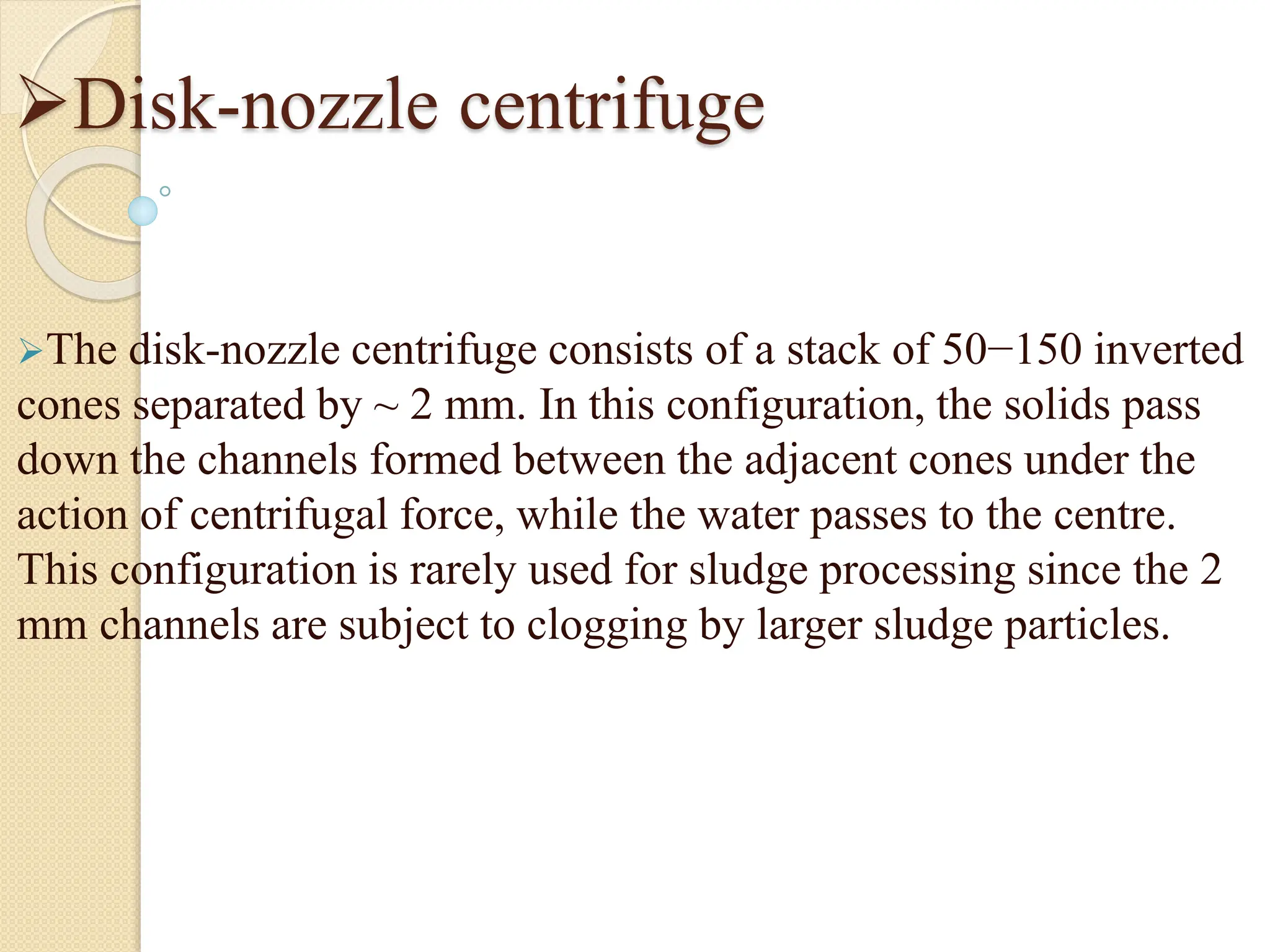Sludge thickening is an important process in wastewater treatment that increases the concentration of solids and decreases free water. This minimizes downstream processing requirements. There are various sludge thickening methods, including gravity thickening, centrifugal thickening, flotation thickening, belt thickening, dissolved air flotation, and rotary drum thickening. Each method concentrates sludge solids using different techniques like sedimentation, centrifugal force, or filtration to remove water. Proper sludge thickening is crucial for efficiently treating solid waste from sewage.
























